
Should you know the chord changes?
I’ve always believed that the best way to gain skill as a musician is to develop one’s ear and its connection to the instrument. That belief led to the creation
Categories:
Categories:
I recently watched a video performance by the amazing classical pianist Yuja Chang. I’ve seen her memorizing motion and heard her virtuosic playing before, but something hit me after seeing this latest performance. She is an example, as all at her level are, of the wider benefits of the musical ear to instrument connection.
I’ve used the phrase, “Connecting mind with instrument” hundreds of times in describing the objective of my books, courses, and talks. But I have always related it to jazz, since the most obvious demand for that connection always seemed to come from jazz improvisation.
I asked my AI chatbot, Jazz Master Chat, what it means for a musician to be connected to their instrument. Its answer was:
For a musician to be connected to their instrument means that they perceive and use their instrument as an extension of themselves, expressing thoughts and emotions through its sounds. This connection is not just technical proficiency, but also an intimate, almost symbiotic relationship where the instrument serves as a conduit for their inner voice.
This involves a deep understanding and familiarity with the nuances of the instrument, allowing for expressive and creative performances that feel both personal and impactful. This connection can transform performances into more than just playing notes; it becomes a form of personal expression and communication with the audience.
If you are not yet familiar with Jazz Master Chat, it is my AI chatbot that allows people to interact with the 75 hours of my interviews with master players and educators about a broad range of topics covered in those interviews. This answer was its distillation of what was said to me within those 75 hours.
But improvisation is not the only need for the mind/instrument connection as Yula’s performance reminded me. The musical ear to instrument connection applies to any great performer of any musical style. Mastery of rock, Latin, funk, jazz, and classical performances all require this connection.
Yuja reminded me that there is a much broader need and audience for my ear-based materials for strengthening the mind/instrument connection.
As a plug for my newest tool called Groovz Playground, the student is provided with over two dozen play-along tracks consisting of one, two, three, or four chord loops. For each loop, the chords are provided as are the associated scales, common tones, example phrases that work well over the entire loop, and recently I’ve added some brief improvisations by me on trombone over several of the loops as a way of demonstrating some of the possibilities for these tracks.
The great jazz pianist Richie Beirach has much to say about this connection. An example of his thinking on the mind/instrument connection comes from the book he and I wrote called A Framework for Jazz Mastery. In the section called Heart Ear Hand, Richie describes in detail the process that occurs between his spark of emotion and the music that his hands spontaneously play on the piano.
“I’m sitting at the piano in front of an audience. Before I play, I’m feeling something. It’s not simply a happy or sad feeing but more attitudinal.
And whatever that feeling or inspiration is in the moment, the feeling, at the speed of light, goes to my ear.
The feeling I’m describing bypasses the brain and goes directly to my ear. And so the feeling ends up becoming a musical phrase or a melody or chord or rhythm, or just a sound.
This particular feeling which is amorphous and difficult to describe becomes a musical idea which travels to my ear at the speed of light and then just as quickly to my hand which allows me to instantly articulate the feeling in sound.”
P. 38 A Framework for Jazz Mastery
While Richie’s introspection of his improvisation process relates to the spontaneous composition of jazz, I’m willing to bet that Yo-yo Ma, Itzhak Perlman, Glen Gould, Vladimir Horowitz, and others at that level would reflect something similar in their performances. They may not be making the notes up as they go, but they still require that connection in order to emote through their particular instrument.
So I’m left with the question: can a tool like Groovz Playground enable any musician to perform more skillfully and authentically regardless of instrument or musical style by more closely connecting their musical ear to their instrument?
If you play music other than jazz or know someone who does and might benefit from the Music Savvy tools like Groovz Playground, Jazz Ear Savvy, Rhythm Savvy, Pocket Jazz or others, take a test drive or recommend to someone that they do. As always, I’m eager to hear the results in the comments below.
And regardless of your instrument if you don’t consider yourself a jazz player and, therefore, don’t think you have anything to gain from a tool like Groovz Playground, let me suggest that you just might.
Access Groovz Playground and then start any one of the play-along tracks. Without looking at the chords or scales, use your ear to find a good sounding note. (If you are a classical player the provided chord changes may not be that helpful.) For multi-chord tracks, that one note might sound good only over one chord, so find another note for that next chord. Use your ear to find a note that sounds good over the entire loop. The point is to use your ears to find notes that sound good to your ears without trying to improvise full phrases. Phrases and melodies come later. Crawl before you walk or sprint!
Do this simple exercise a little bit each day for a while and hear if some aspect of your playing improves. Maybe it’s intonation or sight-reading or the musicality of your phrasing, or some other unexpected improvement. A closer connection between your musical mind and your instrument can result in some unexpected but significant benefits.
Back to Groovz Playground, here’s a track consisting of only one chord. While several of the Groovz Playground tracks are jazz styled, many are not. This track is called Sound Refuge and can best be described as a calm etherial atmosphere constructed from drones, voices, strings, etc.
Get your instrument out and play over the track. The word “Playground” was chosen purposefully because I want you to have fun with this and the other tracks. By the way, Groovz Playground is free for the time being. Why? Because I’m much more interested in getting your feedback than squeezing a few dollars from this.
Now, don’t just start playing your instrument as soon as you begin the track. Instead, listen to it for a few seconds and imagine what musical lines might come from it. Then, without preconceived expectations about playing all over your instrument, and free from the negative internal dialogue telling you “I can’t improvise”, simply play something. Start with the first note, then play another note, and so on…
For each track within the collection, I provide chords, scales, tones that sound good, and a written out phrase or two to get you started. For now, I’ll just tell you that the A major scale works well over this entire track. But again, don’t just launch into a scale. Play a scale just to get the feel of the harmony, but I really want you to explore musical lines, not memorized patterns or scales. There’s no grade or expectation of you.
I recently added a feature from a request by an astute user of Groovz Playground. He asked that I include a bit of my own improvisation over each track. I’ve since heard from others that this has been very helpful, so here is a minute of my improvisation for the track Sound Refuge. This is not intended to be copied, but rather to help open your mind to the endless possibilities.
I don’t think anyone hearing me play over this track would immediately peg me as a jazz musician. I think what could be said is that I have a sense of the story I wish to tell using the alto trombone.
And that is what I wish for you. Perhaps the first step is to stop telling yourself that you can’t improvise. I believe that after a certain level of technical proficiency on your instrument, you can tell an interesting story. This is not “effortless improvisation.” Rather, it is a willfully skilled exploration of the connection between your musical mind and your instrumental.
Let me know in the comments below what you discover about yourself!
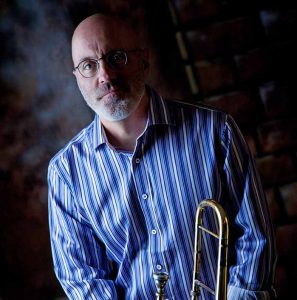
Trombonist, author, marketer, & tech guy
Share this post…

I’ve always believed that the best way to gain skill as a musician is to develop one’s ear and its connection to the instrument. That belief led to the creation
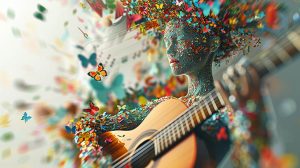
I recently watched a video performance by the amazing classical pianist Yuja Chang. I’ve seen her memorizing motion and heard her virtuosic playing before, but something hit me after seeing
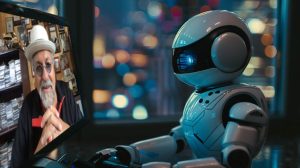
I have created a AI chatbot called Jazz Master Chat that draws from 75 hours of interviews from my Jazz Master Summit event a couple of years ago. I interviewed

My recently turned 18 year old son is a passionate photographer He 8217 s got himself a little business

A couple weeks ago I sent Richie Beirach a YouTube clip from the movie Whiplash as a bit of
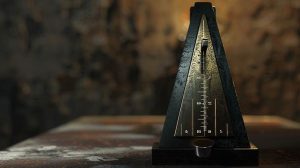
I originally meant to write this as a reply to a comment Richie Beirach wrote on my blog But
Tools for helping musicians at all levels learn about jazz and play to their full capability.
Web design and marketing by:
Michael Lake @JazzDigitalMarketing.com
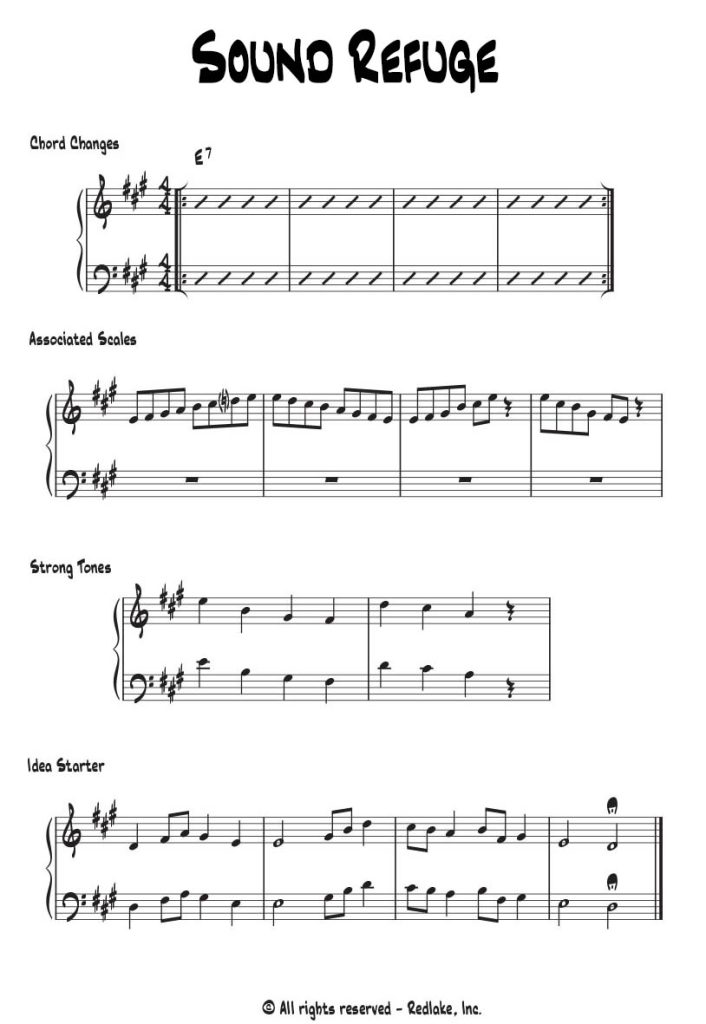
This is just a fake book example for the type of website I can build for you. Just trying to use a little humor here!
2 thoughts on “The Benefits of the Ear to Instrument Connection”
I enrolled in Groovz Playground. Its written for C instruments. I play clarinet , tenor and alto sax. Do you have a version for Bb and Eb instruments?
Hi Kerry, yes, I have been planning on providing the Bb and Eb versions of the notation. You request has moved it to the top. Let me start working on that. I’ll make then into pop-ups from a link in the track description. Thank you!